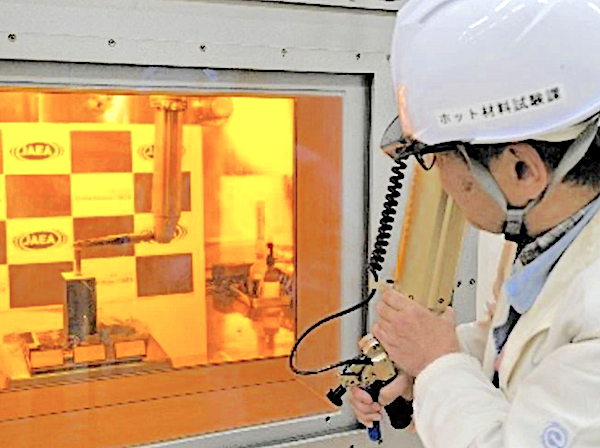
Japan has embarked on a mission to create a battery system that can continuously generate electricity for a century under the extreme conditions of outer space.
Long-operational, maintenance-free batteries are expected to play a crucial role in not only lunar projects but also for deep space exploration beyond Jupiter, where sunlight is weaker.
The Japan Atomic Energy Agency (JAEA) signed an agreement with the Japan Aerospace Exploration Agency (JAXA) in March to create such a specialized battery system using a radioactive substance called americium.
“We believe our project is feasible although it is now facing a range of challenges,” said Masahide Takano, a senior JAEA researcher. “We will pitch a compact power source at a practical level that will not require any maintenance for upward of 100 years.”
The power source will rely on different mechanisms from those of solar cells or other batteries used under normal conditions on Earth.
For use on the moon, the envisioned battery must be able to cope with temperature fluctuations ranging from 110 degrees during the day to minus 170 degrees at night.
Both day and night periods last for two weeks on the moon.
Americium is an element produced when plutonium in spent nuclear fuel naturally decays.
The substance is not usually subject to continuous fission, meaning it does not need to be controlled as stringently as plutonium.
Americium can be found in plutonium stored by the JAEA within Japan for research purposes.
With a half-life of 432 years, americium was long considered useless for power generation.
However, the JAEA recently found a use for americium’s ability to continually produce heat through its nuclear decay process.
The JAEA is now moving to combine americium with power generation technology based on temperature differences to produce a new type of battery.
One challenge is to make the battery system compact and light enough to be mounted on a space probe, as well as durable enough to survive the shock and heat of a potential rocket explosion.
A close examination of remote engineering techniques to process the radioactive substance as well as relevant legal factors will also be indispensable.
The JAEA has already applied americium to power an LED light in a test.
Receiving financial support from the government-affiliated Space Strategy Fund, the JAEA is seeking to complete a prototype device roughly the size of a milk formula by 2029.
By Takahiro Takenouchsi staff writer Asahi Shinbun
